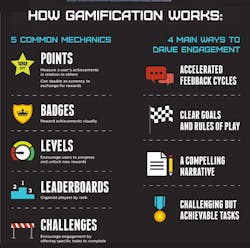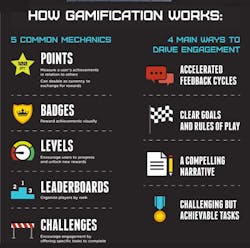How dentists can use gamification to increase patient traffic and improve retention
In order for you to understand how gamification works and why implementing this growth hacking strategy into your dental marketing program is a must, I will review the six core elements of human behavior/psyche that drive all successful games – desire, incentive, challenge, achievement/reward, feedback, and mastery.
All humans (including the prospective new patients you’re targeting) are wired with an innate desire (even urgency) to become the best at a specific activity, and more importantly, to be rewarded for their expertise and dedication.
This lies behind the massive appeal of gamification, a principle and growth hacking strategy that is gaining momentum in major industries around the world, including the dental profession. In fact, the gamification market is currently worth more than $430 million annually and is expected to reach nearly $2.8 billion by 2016, according to data released by M2 Research.
Gamification is the process of using game mechanics and game thinking to drive engagement and create desired action. By rewarding users (prospective and existing patients, employees) with points and badges in return for referrals, purchases, and any user behavior that you want to improve. Gamification supplies dentists with the resources to increase new patient traffic, referral rates, case acceptance, and retention.
As the official growth hacker for the dental profession and the only vendor to provide gamification services for dentists, the goal at Growth Hacker Central is to create a more memorable brand experience for our clients. Gamification in the dental profession is turning typical patient behavior – paying for services, visiting a website or blog, referring others and/or signing up for a newsletter – into elements of a game, where existing and prospective patients receive tangible or symbolic rewards for their participation in the game.
I predict that at least 20% of all practicing dentists will employ gamification strategies in the next three to five years. With gamification becoming a more vital component of optimal patient retention strategies, dentists are wondering how they can implement competitions and challenges to increase referrals and improve ROI.
Through investigation of their target audiences, we can determine the optimal channel, as well as what incentives are most effective in driving desired actions and increasing patient retention, i.e., improve patient loyalty.
Gamification uncovered
Gamification is the process of using game thinking and game mechanics to engage targeted audiences and solve problems. Put another way, it’s about taking the best ideas from games, loyalty programs, and behavioral economics, and using them in new and exciting ways to help dentists increase production and profit.
Industry analysts are keen on the concept of gamification for all types of brands. A recent Forrester Research report, titled “Gamification Of Marketing Strategies Boosts Consumer Engagement,” spotlighted how brands, films, and merchants can achieve increased loyalty and purchase rates by tapping into the human need for achievement and success. Forrester analyst Elizabeth Shaw described the tactic as, “the insertion of game dynamics and mechanics into non-game activities to drive a desired behavior.”
Forrester Research defined successful engagement as degrees of the four I’s – involvement, interaction, intimacy and influence. Gamification uses these strategies to enhance communication and action, and in turn, create more memorable experiences for consumers.
Gamification encourages the four I’s of engagement in the following ways:
- Involvement – Gamification allows dentists to increase participation among existing and prospective patients, leading to increased referrals, new patient appointments, and case acceptance.
- Interaction – Content becomes more meaningful to patients when they are connected to a specific dentist. Gamification gives players incentives to interact with the practice, leading to the increased likelihood of case acceptance, treatment, and referral. We can leverage an action/reward dynamic for the activities and behaviors our dentist clients want to increase, such as referrals.
- Intimacy – A big challenge for dentists is making their brand more personable. By tapping gaming strategies, dentists can spark a real-time, intimate connection with patients through fun and rewards.
- Influence – Incentives such as tokens, badges, and offers encourage patients to share games with their social contacts. Encouraging these social bragging rights helps boost word-of-mouth, encourages bystanders and peers to join the game, and ultimately increases new patient traffic.
Through these four areas, dentists can develop a gamification strategy that drives action (new patient appointments, case acceptance, etc.) and improves patient retention. If you would like to know more about implementing a gamification strategy into your dental marketing program, contact Dr. Ken Newhouse at Growth Hacker Central. If you want to know more about the benefits of Growth Hacking your Dental Practice you can download the Definitive Guide to Growth Hacking Your Dental Practice Marketing.
Ken is a certified LinkedIn expert, reaching his first 1,000 connections
in less-than 30 days. You can connect with Ken on LinkedIn here.


